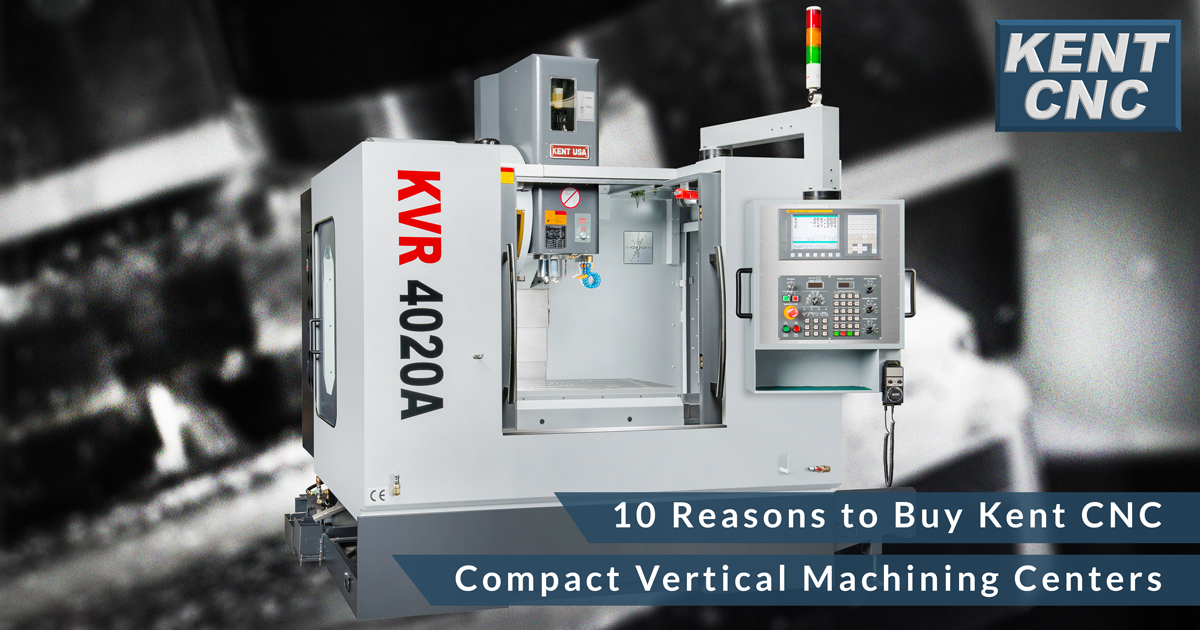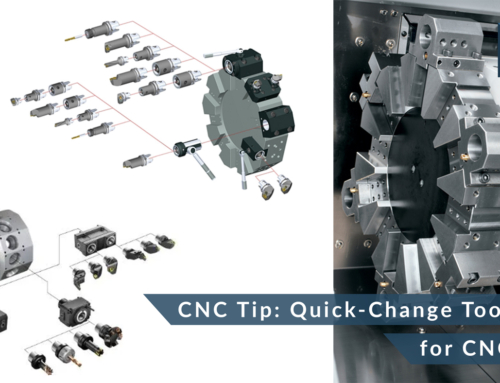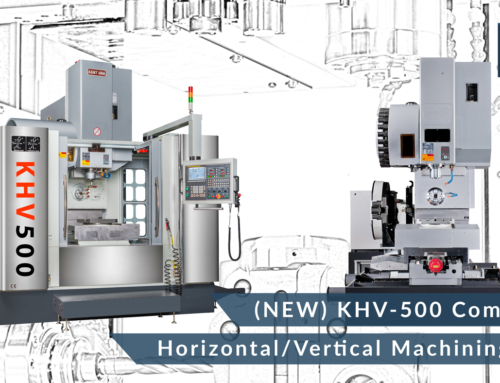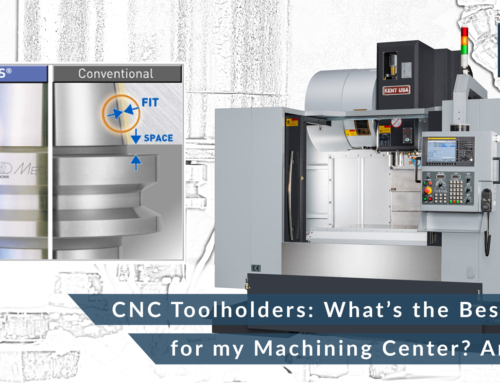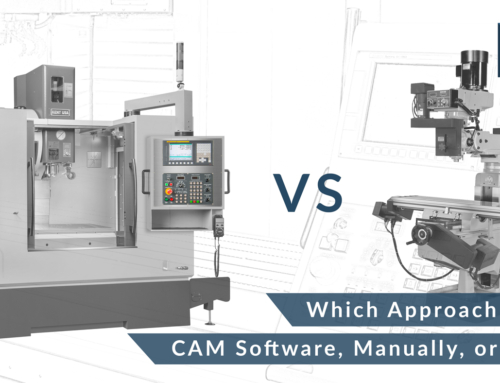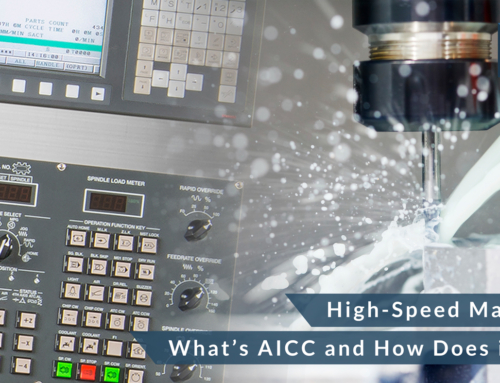Shopping for a Vertical Machining Center – What to Look for
Before making any major purchase, such as a Vertical Machining Center (VMC), it would be wise to take stock of your application requirements. These machines, across the board, can vary in price and functionality.
With the recession behind us, many businesses are still taking their time, being cautious about increasing or upgrading their machine tool inventory. But as business becomes more robust, machine tool shop owners are seeking to bring-in greater capability to their operations.
Most find that a CNC (Computer Numerical Control) vertical machining center offers the best solution for their needs. With so many options available, taking the time to weigh through your options is important. If you run a smaller shop or if your production needs are not that huge, you may consider purchasing a 3-axis machine. If your shop is larger with greater production volume, a 5-axis machine might be what you need. The challenge is to assess your machining requirements and balance that with what you are willing to spend.
Which Vertical Machining Center is for you?
Finding out which VMC is right for your business requires doing your homework first. You may want to ask yourself a few questions. What types of projects will you be working on? What are your production goals? What types of materials you will be cutting? What are your future plans?
Your VMC will need to have the right spindle speed, axis travel, rapids and table size to get the job done. The newer CNC machines are extremely accurate and can hold very tight tolerances. But the higher-end they are, the more expensive they become.
What shop owners sometimes do is they miscalculate and “over-spec” their machines, spending a ton of money on a VMC that has much more capability than their projects will ever require. On the other hand, others cut themselves short by buying on the cheap and later regretting the fact that their needs require more or that their machine loses accuracy and repeatability. Both these scenarios affect profitability and defeat the purpose of your investment.
For simpler projects, a 3-axis VMC will hold the workpiece to the table and cut 3-dimensionally on one side. With a 4 or 5-axis rotary, the workpiece can be rotated for machining on a different side or angle and will not require a new set up which is commonly needed for turned parts. Learn more about the KVR Series VMC with optional rotary table add-on.
Selecting the Right Vertical Machining Center Manufacturer
You’ve assessed your needs and requirements for your shop. You’ve done all your research and internet searching and now you’re ready to purchase your machine, right? Well, there’s more to it than that. The best way to make a careful choice in purchasing your VMC involves finding out a few things about the manufacturer. Some questions you may ask are: What kind of reputation do they have? Do they offer quality machines and good service? Do they offer a complete line of products? Do they also provide support for older models? If they don’t support older models, chances are they won’t support your model down the road either.
It’s important to find a full-service machine tool builder connected with a distributor network that will provide sales and service support and skilled, factory-trained technicians. As part of the deal, they should offer installation and training with fair pricing and financing. Ask your dealer to arrange for a cutting demo. Kent CNC has been providing machine tool equipment worldwide out of Tustin, CA. See our U.S. distribution network.
Find out all about it
Machines, today, are amazingly high-tech. Not long ago, linear guides were the latest, with box ways being the standard up until that time. Nowadays, linear guides are the predominant leader in the machine tool industry. There have also been many other improvements in all areas of machine tools. Kent CNC has a full line of both Linear Guide Way VMCs and Box Way VMCs.
However, cast iron is still the staple material found in VMCs and is considered the most rigid, vibration-dampening casting. The cast iron material also contributes greatly in providing higher accuracy, and smoother surface finishes.
Mission Control
The CNC automates the VMC via a computer that executes pre-programmed commands to the VMC. This is in contrast to manually controlled machines that are operated by levers and hand wheels. It’s how the machinist communicates with the machine. Questions you may ask are: Is it easy to use or does it require extensive training and learning? Is the CNC designed and serviced by the manufacturer or a third party? The CNC functionality is largely dependent on its ease-of-use so this is a very important consideration. Is the CNC you purchase easy to use without a lot of additional training?
Another idea is to visit with other shop owners and talk with them about the machine you’re considering. Features like Ethernet and USB connectivity, user-definable macros and programming without knowledge of g-codes are just some the options to choose from. There are different types of CNCs with a wide range of features. The one you pick will depend on the needs of your shop.
VMC Options
You want your VMC to be productive. Finding out what you need will make all the difference. It’s best to have these options factory-installed when you purchase your machine as this may cost you less money in the long run. You can always add more options later.
These are some of the most popular options available:
- Side-mount tool changers
- 10,000, 15,000 or 30,000 rpm spindles
- Linear scales
- Faster rapids
- Ethernet connectivity
- USB connectivity
- Remote jog handle
- Automatic chip-auger or belt-type chip conveyor
- 50-taper spindles and more torque
- Side-mount tool changers
- 4th- and 5th-axis capabilities
- Work and tool probe systems
- Rigid tapping
Determining the options that are best for you, first, involve identifying what options are available for your machine. Know what each option does and decide what you may need in the future.
Indexers and Rotary Tables
Greater flexibility can be added to your VMC with a 4th or 5th axis rotary device. As previously mentioned, the VMC is a vertical-spindle machine tool that cuts in 3-axes, with the workpiece mounted to the table. In many cases, the workpiece is rotated to expose another side to the cutting tool. For this to happen, typically, the workpiece must be removed from the jaw chuck and manually turned to the next side and then installed in another set up—unless you have an automated rotary product to do this for you.
Standard T-slots are where the CNC’s rotary table is mounted on a VMC’s table. The rotary table makes a circular motion along the A-axis allowing the workpiece to move into position. Rotary tables can provide 4th axis simultaneous motion, semi 4th axis motion or basic indexing.
4th Axis Rotary Tables
The most important function and capability of a rotary table is its ability to automatically position the workpiece so that two or more sides of the workpiece can be machined with only one set up. This reduces set up time, machine idle time, cycle time and the number/frequency of tool changes, while increasing accuracy.
4th Axis Indexers
The smaller, programmable 5C collet indexer is a popular design. It holds parts via a manual or air-actuated collet. Parts mounted to a shaft or rounded parts insert easily and quickly into the collet providing rapid changeout for the next cycle. However, note that the term “indexer” can be misleading since these units provide continuous rotation and can position to any angle. Collet indexers are best suited to the production of multiple small workpieces per set up. Some manufacturers offer special tooling and multiple-spindle designs.
5-Axis Machining
If you want to machine more complex workpieces and geometries in a single set up, then adding a 5th axis will provide more capability and versatility. You’ll be amazed at the intricate detail and compound curves you will produce!
The two main types of 5-axis rotary tables are tilting tables and trunnion tables. Tilting tables have one rotary unit mounted to the platter of another providing two-axes of motion. Trunnion tables operate with an A-axis, rotating around the Z-axis and a C-axis rotating around the Z-axis and they can handle larger work volumes. The tilting tables operate with a B-axis rotating around the Y-axis and a C-axis rotating around the Z-axis. Trunnion tables can handle heavier machining and require less Z-axis clearance. Both provided accurate, precise machining in the 4th and 5th axes, holding the part securely during the process.
Dual-axis machines can provide full simultaneous 4th and 5th axis motion, semi 4th or 5th axis motion or basic 5-axis positioning. This depends on the machine and type of control you are using. Be sure to check the compatibility of the rotary device with your VMC if you’re thinking about buying it from a third party.
The Bottom Line
Think carefully about the specs and details of your VMC and/or rotary. Consider what you’ll need before your purchase. Talk with fellow colleagues and ask them to share their experiences with you about their VMCs. And learn about the manufacturer’s reputation. Always insist on quality and top-notch service. Be realistic about what you’re willing to pay for your VMC, and keep in mind which options and rotary products you’ll need now and in the future. Think about your bottom line…increased productivity and maximizing your profitability.

